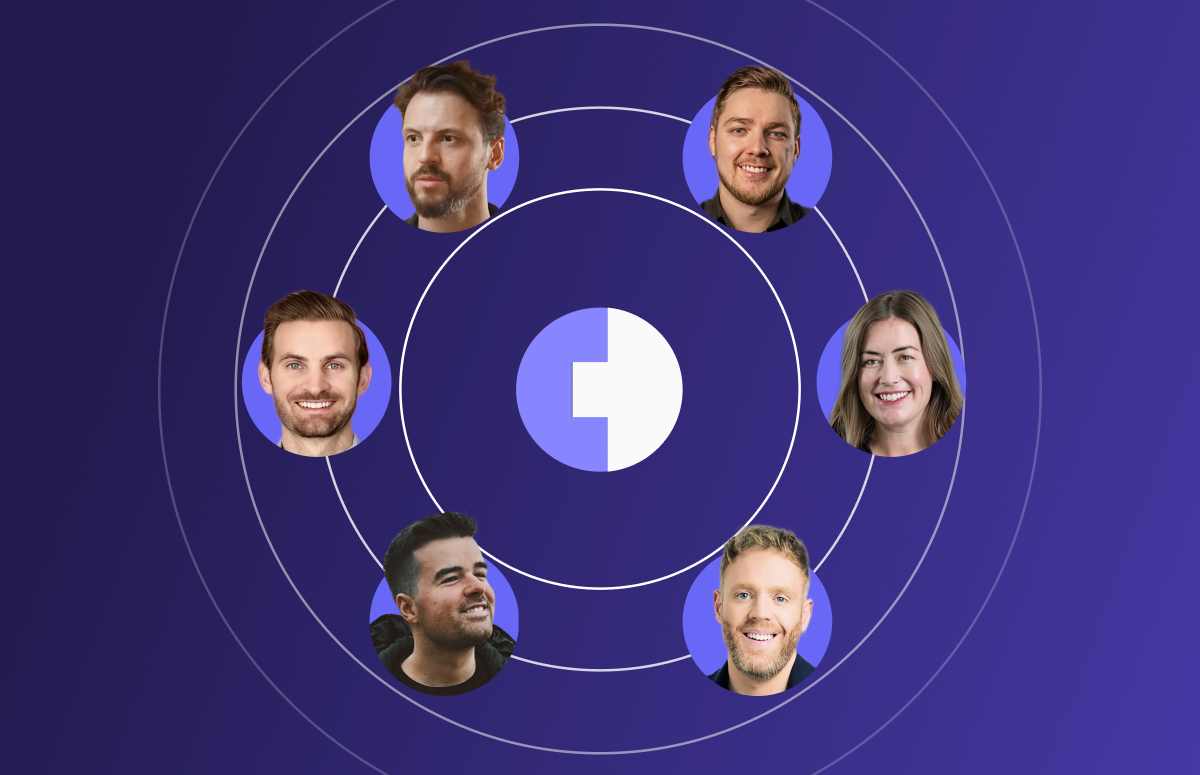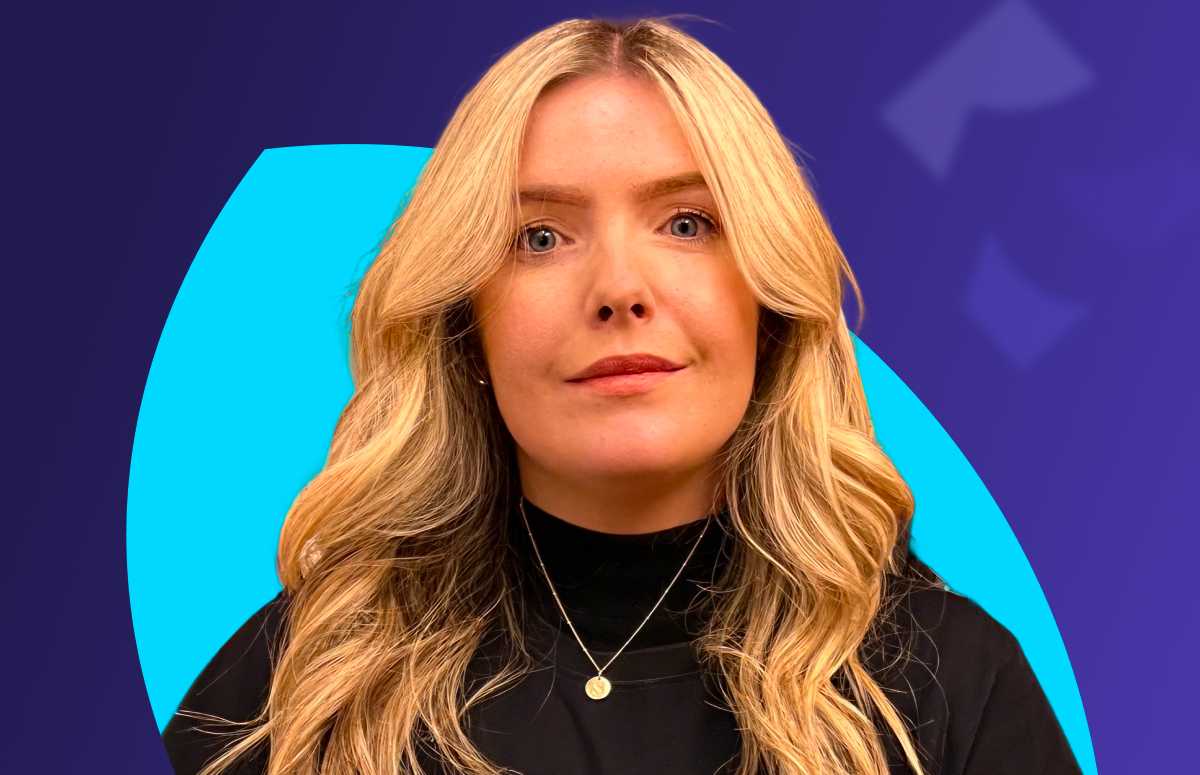How Kaspr 2x’d Its Growth in EU Markets
When Cognism acquired Kaspr (the leading player in the French sales enablement sector) in 2022, we had ambitious growth plans for it.
Two years later and we’ve doubled its revenue.
How did we do it? One word…
Marketing!
If any of our readers need convincing about the viability of a demand generation motion, this is the blog for you.
In this blog, we’ll explain how we doubled Kaspr’s growth with a 100% demand generation marketing play.
First, some background. 👇
Getting to know Kaspr
Founded in Paris, Kaspr offers a similar service to Cognism but is aimed at a different market segment and has strength in different geographies.
Kaspr offers subscriptions to individual buyers with a simple procurement process – you just need a credit card. It’s more like a B2C model compared to Cognism’s B2B, even though Kaspr’s customers are still within the business sphere.
Kaspr has a small sales team that focuses only on inbound lead generation. Unlike Cognism, which has a fully-fledged sales team, Kaspr uses a PLG (product-led growth) strategy, in which the product leads the growth. A PLG strategy allows interested buyers to self-serve trials and sign up without speaking to a sales rep.
It also serves a predominantly French-speaking client base.
In all, Kaspr is similar to Cognism in terms of product but different in several fundamental ways. This presented an interesting challenge to Cognism’s existing marketing function.
Let’s get into Cognism’s journey of scaling up Kaspr over the last two years! 👇
All about the money, money, money keywords
After we acquired it, the first step was to audit Kaspr’s SEO strategy.
We found that we essentially had a blank slate to work from. Kaspr had a few blogs on its site, mostly targeting TOFU, but they had little product relevance and no SEO strategy tying them together.
There was very little awareness of Kaspr in international markets, and they were starting to run into issues regarding how to scale beyond France.
This was actually great news for us.
There was a tremendous amount of low-hanging fruit waiting to be picked.
After a short “keep or kill” exercise on Kaspr’s existing content, we rolled out our SEO playbook.
Our SEO goals?
- Grow traffic.
- Grow traffic value.
- Drive organic sign-ups.
- Pave the way for internationally.
Daisy Shevlin, who led Kaspr’s SEO programme, explained:
“The first step was to build out key content clusters that Kaspr should go after, outbound sales clusters and pillar pages that we linked smaller articles to. After that, we built out competitor pages, vs. pages, and alternatives-to pages.”
“The approach was to start from the bottom of the funnel and work up from there.”
Of course, we couldn’t just copy and paste Cognism’s keywords and blogs under the Kaspr brand. We had to account for Kaspr’s personas and ICP.
The upshot was a very different set of keywords – more tactical, more aligned with what individual users might search and the interests of smaller businesses.
SEO was key to international expansion, too.
A luxury of being English-speaking is that an SEO strategy in English generally carries through Europe due to the high levels of English spoken on the continent.
This helps us capture demand in countries like France, Spain, and Germany. It also opens us up to other markets and helps to inform future expansions.
Kaspr’s PLG growth strategy is well-suited to international growth. That’s because it’s based on buyers exploring it under their own steam. It just needed a push from the SEO side to get Kaspr under more noses.
With the help of regional marketers, we wrote content in English which we translated into French, German and Spanish. The local SEO managers also helped us with tone and to identify pain points particular to certain countries.
Tell me what you really want
At the same time as the Kaspr acquisition, Cognism was working with Gaetano DiNardi on Cognism’s money keyword SEO strategy.
Daisy explained what a money keyword strategy is:
“A money keyword is a high-intent keyword that aims to convert people further down the funnel. A money keyword targets problems that you can position your product as the solution to.”
In short, these are keywords that buyers only search for when they are in-market. “Kaspr pricing”, “Kaspr reviews”, “Kaspr vs. Lusha” are examples of money keywords.
The thinking goes, instead of aiming for high-volume traffic with minimal conversions, you should allocate more resources and effort into driving smaller volumes of targeted, high-converting traffic to your website. This approach yields better results.
But how do you choose which keywords to prioritise?
The key is to strike a balance between two factors:
- Match search terms used by in-market buyers.
- Kaspr is critical to solving a problem.
We score a topic’s business potential based on how critical Kaspr is to solving it.
For example:
“GDPR compliant prospecting” could be a topic with poor potential to position Kaspr as the best solution. While Kaspr is GDPR compliant, so are other sales enablement solutions, and the topic is unlikely to signal high buying intent.
Whereas a topic with high business potential could be: “How to get high-quality contact data and enrich leads en masse”. Someone searching around that topic is likely to be close to considering Kaspr or a competitor.
So, how did it go? Pretty well!
Let’s run through the numbers on two years of a hybrid traditional and money keyword strategy:
- Kaspr’s traffic was 3K two years ago. Today it’s 38.6K - a +1000% increase.
- Kaspr’s traffic value was $9K two years ago. Today it’s $104K - a +900% increase.
- Kaspr’s domain rating has gone from 41 to 60 in the last two years.
- Organic sign-ups have increased by around 700% in the last two years.
External creators
The second pillar of Kaspr’s impressive growth is external creators.
External creators have helped us:
- Create great content that builds a large audience.
- Validate our POV.
- Expose Kaspr to large communities to build trust with end users.
Let’s talk about how Kaspr used external creators! 👇
Cognism has been working successfully with external creators, also known as B2B influencers, for a while now, and we took lessons from that journey and applied them to Kaspr.
We love working with B2B influencers because:
- They’re established subject matter experts on a specific topic.
- They have their own (often large) audience of people who follow and trust what they say.
- They’re well-connected with other influential voices in the space.
At Kaspr, we brought in Shabri Lakhani, a well-known sales SME with a strong following on LinkedIn.
Working with her helped us to build Kaspr’s thought leadership content with expertise and authority.
Joe Mclaughlin, Senior Demand Generation Manager at Cognism, explains,
“Shabri’s Kaspr podcast, Everything is Sales with Shabri, helped us to build Kaspr’s thought leadership content with expertise and authority. Her connections helped Kaspr hit LinkedIn's top creators quite quickly. Working with Shabri bypassed the need to grow a base first.”
Affiliate marketing
A second branch of this external creator strategy is how we approached the affiliates programme, which differed from Cognism’s influencer marketing strategy.
We formed relationships with influential sales voices on LinkedIn where payments are based on the number of people they bring in. These creators included Thibault Souyris and Alan Ruchtein.
These two fall in the category of micro-influencers (sub-10k followers) and are popular among French-speaking audiences.
The strategy nicely aligned with Kaspr’s PLG strategy. We offered affiliates a code for their followers to test Kaspr with 25 mobile credits per month versus the usual 5.
Getting people in and using Kaspr on a trial basis is a top growth priority as it allows PLG to work to its maximum potential.
That’s why the content produced is much more product-centric than Cognism’s influencer marketing campaigns. A common type of podcast or blog would be “Here’s how Thibault used Kaspr to book 15 meetings a week”.
The affiliates programme also suits Kaspr’s finances and market positioning better than Cognism’s fully-fledged influencer partner strategy.
Kaspr’s average customer value is much lower than Cognism, given it serves individuals. This means its cost per acquisition (CPA) needs to be comparatively lower, too.
Joe explained,
“Initially these relationships required manual intervention, i.e. a fee plus referral cash, to get off the ground. But the goal was always affiliates that will just do referral fees. We give them the tools they need and they start talking about us. And then find bigger contracts from those relationships.”
It’s much easier to reach that lower cost per acquisition working with a network of affiliates than via an affiliate programme based on the customers they bring in.
That compares well with a potentially large monthly contract for working with a big influencer.
Localisation
We’ve touched on SEO localisation already, but localisation also plays a role in our demand generation engine.
We’ve seen other companies try and fail to expand internationally by translating and pushing existing content and expecting it to work the same. In fact, you can read about Cognism’s own bumpy road to international expansion here!
At Kaspr, we knew we needed to pay heed to local differences.
Joe explained,
“To tap into issues local salespeople are facing, we work with a dedicated paid ad spend person in each region. We run ads in all three languages, with distinct localised messaging and positioning for each region.”
“These on-the-ground associates help us with messaging and regulatory and compliance issues.”
“We now have a fully functioning Kaspr media machine in three languages and the website is available in four: English, French, Spanish and German.”
“Localising our content in this way provides a big competitive advantage. Not many of our rivals in the English-speaking world have the appetite to go big in foreign-language content. We can tap into the specific needs of each market and work with creators there in ways that others can’t.”
The wedge approach
Before we dived headlong into a new geography, we needed confidence that there was an opportunity worth pursuing.
We take a three-step approach to help us move confidently without crashing into an iceberg.
- We use SEO to drive awareness in target geographies and then use data to estimate interest. For Kaspr, we used organic sign-ups as our “tell” to know whether to increase our activity in a country.
- If we win enough organic sign-ups, we push ad spend into the territory.
- If the ad spend produces results then we roll out our demand creation tactics – full steam ahead!
Capture demand efficiency
We split our spend roughly 50-50 between create demand and capture demand.
For a PLG business like Kaspr, keeping cost per acquisition down is critical. It can be easy to let that slip amid fast growth so we had to be extra disciplined to keep it under control.
We recently overhauled Kaspr’s Google campaigns, home and landing pages, customer journeys and site navigation. They’re now as streamlined as possible and can support increased investment while keeping CPA low.
As well as this complete paid restructure, we also refreshed our retargeting approach and product messaging.
After about a year and a half, our early growth was starting to plateau and CPA was rising. We realised Kaspr and Cognism’s market positioning was overlapping and they were treading on each other’s toes. We carried out an exercise to differentiate the product positioning.
For Kaspr, we honed the messaging to four key pillars:
- Europe focus.
- SMB segment and individual contributors.
- Plug-and-play solution.
- Fits seamlessly into current workflows and tech stacks.
This had an immediate impact and unlocked the growth we were struggling to reach.
Key takeaways
Acquiring Kaspr allowed us to re-prove our belief in demand generation marketing while asking us to adapt aspects of the Cognism playbook.
The short answer is, ultimately, we 2x’d Kaspr’s growth in EU markets in two years by…
- Building a traditional SEO foundation, overlaid with a high-intent, money keywords strategy.
- Building a network of affiliate content creators to generate demand.
- Expanding internationally and localising in an agile way, leveraging the benefits of a lightweight PLG strategy.
- Maintaining CPA discipline.
So, that’s a look behind the curtain – and yep, no magic, just good, honest, reliable marketing practices that any team can copy.




